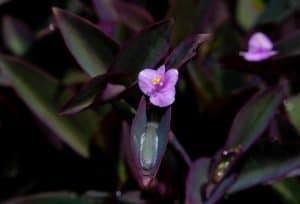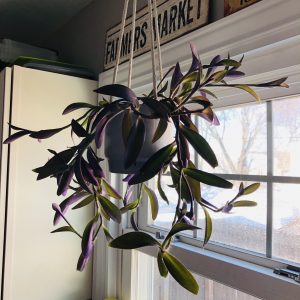What is Purple Heart Plant?
Purple Heart Plant is a perennial, with purple stems and purple-violet leaves that produce pink flowers in the summer. This plant is mainly grown from its foliage (the leaves can be 7 inches long), the optimal color obtained in sunlight, and a dry and narrow root area. It is nice as a ground cover or in hanging containers or baskets. It grows 8-12 inches tall and 16 inches wide.
From mid-summer to autumn, and sporadically at other times, bright pink or pale purple flowers bloom with golden yellow stamens at the ends of the stems. These ½ “full flowers have three typical petals of this genus.

Scientific Classification of the Purple Heart Plant
Scientific name: Tradescantia pallida
Family: Commelinaceae
Kingdom: Plantae
Higher classification: Spiderwort
Order: Commelinales
Rank: Species
What types are available of Purple Heart Plant?
Spiderwort ‘Tradescantia Virginiana’
Spiderwort is a spring-blooming flower, a perennial plant native to North America with long strap leaves, widely grown during the flowering week. The spider has a relaxed, grass-like shape, dotted with quarter-hour flowers that last only one day. Fortunately, each plant produces many. Flowers are light blue petals very popular, but some varieties bloom in white, pink, and purple. They usually close in the afternoon sun and last only one day.
Boat Lily ‘Tradescantia Spathacea’
Tradescantia spathacea is a beautiful succulent introduced to South Asia and many Pacific islands from its native range in tropical America. Although not yet confirmed as a pest, in many areas, it is a highly invasive weed, especially in Florida, where it is invading and disturbing native plant communities. Tradescantia spathacea creates a dense ground cover on the forest floor, which prevents native plants from sprouting.
Inch Plant ‘Tradescantia Zebrina’
Inch Plant grows in house. It has attractive variegated foliage green, white, and gray striped with purple backgrounds. The leaves are ovate and squeeze the stem at the base. Small lavender-purple violet flowers are rarely indoors. The leaf nodes on the stem are thought to be 1 inch apart, so the plant in inches is a common name. It bears a wide range of growing conditions. Preferably under the filtered sun, medium ambient temperatures, and moist but well-drained soil.

How to grow Purple Heart Plant from cutting?
With a purple heart plant, the propagation of cuttings is as simple as sticking them directly into a damp soil or potting soil and keeping them humid until you see signs of new growth. Get cuttings from purple indoor plants or from the nursery, whenever it actively grows and from outdoor plants in spring or summer.
Grow your plant in bright light all year round for good foliage color. It will grow in low light conditions, but the leaves will be greener than purple. Give it direct sunlight, but protect it from the hot midday summer sun to burn its leaves.
How to care Purple Heart Plant?
Soil requirement
The ideal is a peat-based moss impregnation mix, such as the African violet impregnation mix.
Light requirement
Intense light is needed to maintain a dark purple color. A little sun is fine, but keep your plant in the shade from the strong summer sun. The long spaces between the leaves indicate that Tradescantia pallida need more sunlight.
Temperature requirement
The medium-warm room temperature (65-80 ° F / 18-27 ° C) is ideal for this plant all year round. Purple hearts bring different temperatures to at least 50 ° F / 10 ° C in winter. Keep away from drafts and sources of heat/air conditioning.
Water requirement
Water thoroughly, then let the top 2.5 cm dry between irrigations—water less in winter when growth is slower. Soft and dried stems can be a sign of root rot; cut an entire stalk at ground level.
Fertilizer Requirements
The purple heart uses soil nutrients efficiently and needs a little extra fertilizer. Pot plants or those grown in poor soils or particularly rapid drainage during the active growing season may require nutrient enrichment to improve its rotten and violet foliage. Dissolve 1/2 teaspoon of multipurpose fertilizer, ratio 15-15-15 in 1 gallon of water. Apply the solution monthly and look for foliage that looks pale or washed out, which is a sign of overeating. Reduce nourishing to once every two months if the heart foliage is pale purple or begins to produce an abundance of legs, small growth.
Uses of Purple Heart Plant
- The pigment of its is used as a food colorant.
- It can be used as indoor air purifying plant.
- Plants purify and clean the air.
Purple Heart Plant is a medicinal plant and has some uses for traditional medicinal:
- The Ayta communities from Porac, Pampanga plants are used for sore eyes.
- It is also used to improve circulation and as anti-inflammatory and antitoxic.
